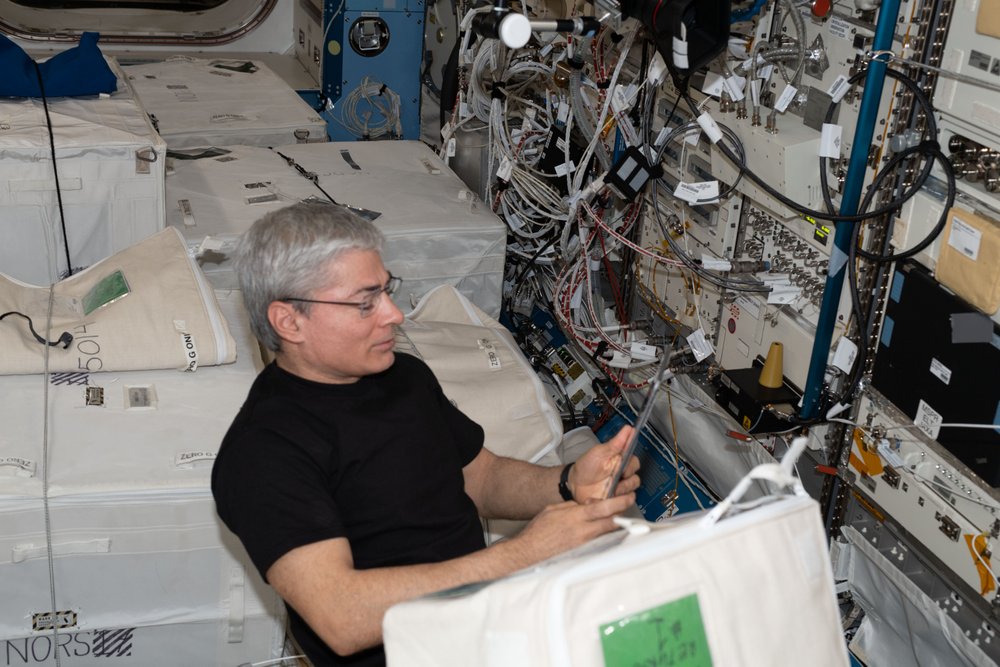Station Science Top News: March 30, 2023
Researchers report that astronauts on long-duration spaceflight experienced a 25% weakening of calf skeletal muscles and enlarged gaps in connective tissue between muscle fibers. Analysis showed more changes following short-duration than long-duration flight, suggesting more acute and rapid changes occur early in spaceflight. In-depth examination of changes in skeletal muscle could support countermeasures to help ensure crew health on future missions to the Moon or Mars.
ESA’s Muscle Biopsy analyzes data on nitric oxide (NO) generated by NO-synthase (NOS). This signaling molecule mediates basic muscle functions and on Earth may undergo changes due to inactivity. The investigation examines NOS expression in human skeletal muscle before and after spaceflight.
The researchers created an extensive database of molecular information on various muscle proteins from the tissues of astronauts after both short- and long-duration flights.
Read more here.
***
An intraocular collamer lens implant to correct nearsightedness and astigmatism can be used safely during spaceflight, according to researchers. A spaceflight participant with such an implant reported stable vision during liftoff, time on board, descent, and landing and a postflight eye examination showed the implant had not moved nor had vision changed. These results suggest that these implants could be a useful tool for helping to maintain astronaut vision during spaceflight.
Researchers obtained data for this study as part of ISS Medical Monitoring, which collects health data at regular intervals from ISS crew members. Maintaining crew health before, during, and after spaceflight, including eye health and vision, is essential to overall ISS mission success.
Read more here.
***
JAXA researchers devised a new way to measure the melting temperature of a specific metal mix (SiO2-CaO-Mn3O4-TiO2) by correcting density measurements using the energy radiated from iron as reference data. They found that this mix melts between 1200 K and 2100 K. Precise calculations of thermophysical properties are critical for the proper solidification of oversized materials used in large-scale manufacturing for space commercialization.
Researchers use JAXA’s Electrostatic Levitation Furnace (ELF) on the station to measure the thermophysical properties of molten oxides. On Earth, glass, metal alloys, and other materials are produced by heating raw materials in a container called a crucible. Chemical reactions between the materials and the crucible can cause imperfection and contamination, but in microgravity, materials can be melted without a container. The ELF supports research to improve manufacturing processes and create new materials for uses in space and on the ground.
Read more here.








